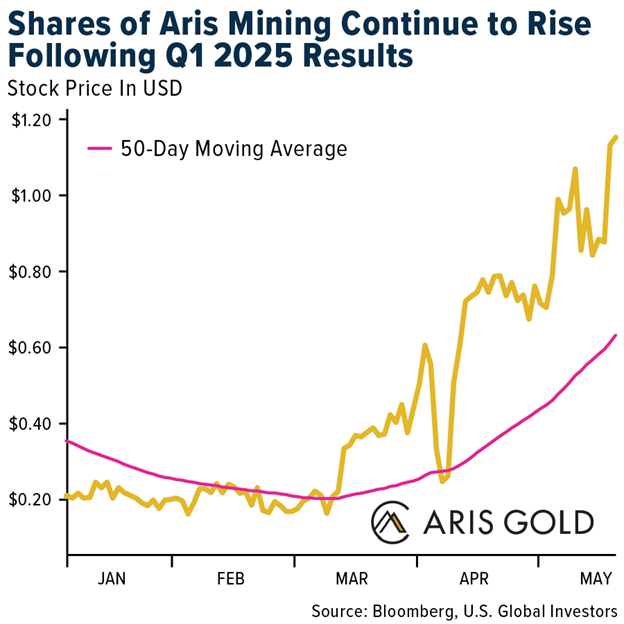(Kitco Commentary) - The best performing precious metal for the week was platinum, up 10.06%.
Strengths
- Platinum surged to a two-year high, posting its strongest weekly gain over four years—up more than 10%—as supply concerns mount and the World Platinum Investment Council (WPIC) forecasts a 1-million-ounce shortfall in 2025. Gold also climbed, buoyed by fiscal concerns in the U.S. following Moody’s downgrade and debates over Trump’s tax bill, with bullion up roughly 4% for the week and now trading around $3,330 an ounce.
- Gold is showing renewed strength, climbing for a fourth straight day as investors react to rising U.S. fiscal concerns and long-term deficit risks tied to President Trump’s tax-cut plans. With Treasury yields hitting multi-decade highs and global appetite for U.S. assets fading, gold has reasserted itself as a preferred haven—up nearly 4% this week and over 25% year-to-date. A weaker dollar has further fueled demand, reinforcing gold’s role as a hedge against structural economic uncertainty.
- Central bank and sovereign demand for gold remains a powerful tailwind, with China importing 127.5 metric tons last month—an 11-month high—as authorities eased restrictions to meet surging domestic appetite. Meanwhile, Ghana is scaling up small-scale gold production to generate up to $12 billion annually, using state-led gold buying to boost reserves and stabilize its economy. Together, these moves reflect how gold remains a critical strategic asset for nations navigating inflation, currency pressure, and macro uncertainty.
Weaknesses
- The least performing precious metal for the week was silver, still up 4.01%. Silver ETF holdings jumped by over 435,000 ounces in the latest session, pushing year-to-date inflows to 19.4 million ounces—a clear sign of strengthening investor demand. As gold rallies and fiscal concerns persist, silver is gaining traction as a leveraged play on precious metals, reinforcing its role as a core safe-haven and industrial asset.
- According to Scotia, Canadian and Mexican miners are likely to feel the largest impact from tariffs as they rely mostly on U.S. imports as the cheapest source of key inputs like diesel fuel, cyanide, tires, heavy equipment and parts.
- According to Scotia, open pit miners, particularly those with high stripping ratios and/or low grades, would see the largest increase in their operating costs in response to tariffs given that their cost structure relies more heavily on fuel, consumables, and equipment as compared to underground miners.
Opportunities
- Midweek a $16 billion Treasury auction was met with lackluster demand, pushing the 10-year Treasury yield on the note up 11 basis points to 4.60%. The recent downgrading of the U.S. credit rating by Moody’s over concerns over the swelling U.S. debt and the currently pending tax cut bill has rattled investors who would traditionally park their money in the U.S. dollar for safety, but that trade appears to be unwinding with capital finding a safer place to park money is now gold, relative to dollar. The S&P 500 plunged 1.61% on the auction results, the worst drop in a month.

Royal Gold announced that it has entered into agreements to acquire a gold stream and a net smelter return royalty on the Warintza Copper-Gold-Molybdenum Project in Ecuador. Total cash consideration for Royal Gold is $200 million. Royal Gold will receive 20 ounces of gold per million pounds of recovered copper, paying 20% of the spot gold price until 90,000 ounces are delivered, and 60% thereafter, according to Canaccord.- Dundee and Adriatic Metals both announced that early discussions have commenced regarding a potential takeover of Adriatic Metals by Dundee, according to Scotia. Dundee specified that it is not certain that any offer will be made nor should the announcement be deemed as an intent to make an offer, although under UK rules an announcement to make a firm intention by Dundee is required not later than June 17, 2025.
Threats
- Johnson Matthey highlighted that “The key near-term uncertainty for the PGM market is the impact of higher import tariffs on the global economy. Material downside risk exists for automotive production (and hence PGM demand), both for exporters of finished vehicles to the USA, and for U.S. auto makers hit by increased duties on materials and components. Trade conflict also has the potential to inflict wider economic damage, which could dent automotive and industrial PGM demand more broadly, both inside and outside the USA, and would also be a drag on consumer spending on luxury items such as jewelry.”
- UBS reports that after Amplats recorded a larger-than-expected inventory build in Q1 2025, they now expect refined production to be weighted more heavily toward the second half of the year. While their full-year 2025 EBITDA estimate is only 3% lower, they project a significantly weaker first half (down 27% year-over-year), with unit costs likely to temporarily exceed the upper end of management’s full-year guidance of R18,500 per ounce.
- Bitcoin has broken an all-time high this week, which comes as a threat to gold—traditionally viewed as the go-to hedge against uncertainty and inflation. With options open interest hitting a record $48.2 billion and traders betting on extreme upside, including $300,000 strike calls, Bitcoin is drawing growing attention. Surging institutional demand, over $5 billion in spot ETF inflows this month, and renewed safe-haven narratives amid trade tensions and fiscal risks further challenge gold’s dominance in the minds of macro-focused investors.

